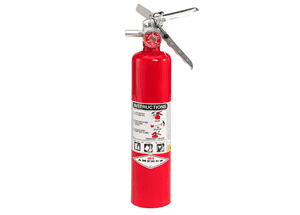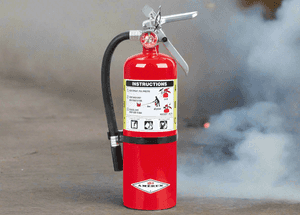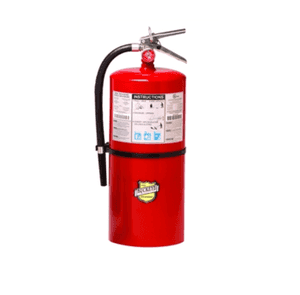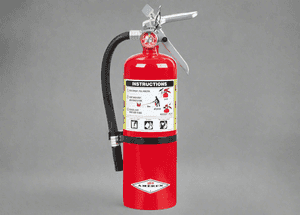NFPA 10: Portable Fire Extinguishers
Installation, inspection, maintenance, and testing requirements
Last updated: October 15, 2025
Contents
Overview
NFPA 10 is the standard for portable fire extinguishers, providing requirements for the selection, installation, inspection, maintenance, recharging, and testing of portable fire extinguishing equipment. This standard is widely adopted by authorities having jurisdiction (AHJs) across the United States.
The current 2022 edition includes requirements for electronic monitoring, new extinguishing agents, and updated inspection protocols. NFPA 10 works in conjunction with UL standards for equipment certification and local building codes for specific occupancy requirements.
Selection & Placement
NFPA 10 provides detailed requirements for selecting and placing extinguishers:
- Hazard Classification: Light (Low), Ordinary (Moderate), or Extra (High) based on quantity and combustibility of materials
- Size Selection: Based on hazard level, room size, and expected fire intensity
- Mounting Height: Maximum 5 feet to top of extinguisher (3.5 feet for disabled access)
- Minimum Height: At least 4 inches above floor level
- Visibility: Must be conspicuous, unobstructed, and properly signed
- Special Areas: Additional requirements for kitchens, laboratories, and electronic equipment areas
- Outdoor Installation: Weather protection required in exposed locations
Travel Distance Requirements
Maximum travel distances to extinguishers by fire class:
| Fire Class | Hazard Level | Maximum Travel Distance |
|---|---|---|
| Class A | Light/Ordinary | 75 feet |
| Class A | Extra | 75 feet |
| Class B | Light/Ordinary | 50 feet |
| Class B | Extra | 30 feet |
| Class C | All | Based on A or B hazard |
| Class D | All | 75 feet |
| Class K | Commercial Kitchens | 30 feet |
Inspection Frequency
NFPA 10 mandates regular inspections:
Monthly Visual Inspection:
- Check location and accessibility
- Verify pressure gauge in green zone
- Ensure no physical damage or corrosion
- Confirm safety seal intact
Annual Maintenance:
- Professional inspection by certified technician
- Verification of all components
- Update of service tag
- Documentation in maintenance records
- Electronic Monitoring: May extend visual inspection intervals up to 90 days with approved systems
Maintenance & Testing
Required maintenance and testing intervals:
- 6-Year Maintenance: Internal examination for stored-pressure extinguishers
- 12-Year Hydrostatic Test: Required for most dry chemical and wet chemical extinguishers
- 5-Year Hydrostatic Test: Required for water, AFFF, and carbon dioxide extinguishers
- Recharging: Required immediately after any use, even partial discharge
- Replacement: Non-rechargeable extinguishers must be removed from service 12 years from manufacture date
- Documentation: Maintain records of all inspections, maintenance, and testing for the life of the extinguisher
Training Requirements
NFPA 10 requires training for personnel expected to use fire extinguishers:
- Initial Training: Upon employment and assignment to area
- Annual Training: Refresher training required yearly
- Hands-On Component: Actual discharge of extinguishers recommended
- Education Topics: Fire classes, extinguisher types, PASS technique, when to evacuate
- Documentation: Training records must be maintained
- Special Hazards: Additional training for Class D and K fire hazards
UL Listed Fire Extinguishers (5)

Buckeye ABC Dry Chemical Fire Extinguisher w/ Vehicle Bracket – 2.5 lb.
$46.00

Buckeye ABC Dry Chemical Fire Extinguisher w/ Vehicle Bracket – 5 lb.
$58.00

Buckeye ABC Dry Chemical Fire Extinguisher w/ Wall Hook – 10 lb.
$84.00

Buckeye ABC Dry Chemical Fire Extinguisher w/ Wall Hook – 20 lb.
$155.00

Buckeye ABC Dry Chemical Fire Extinguisher w/ Wall Hook – 5 lb.
$55.00